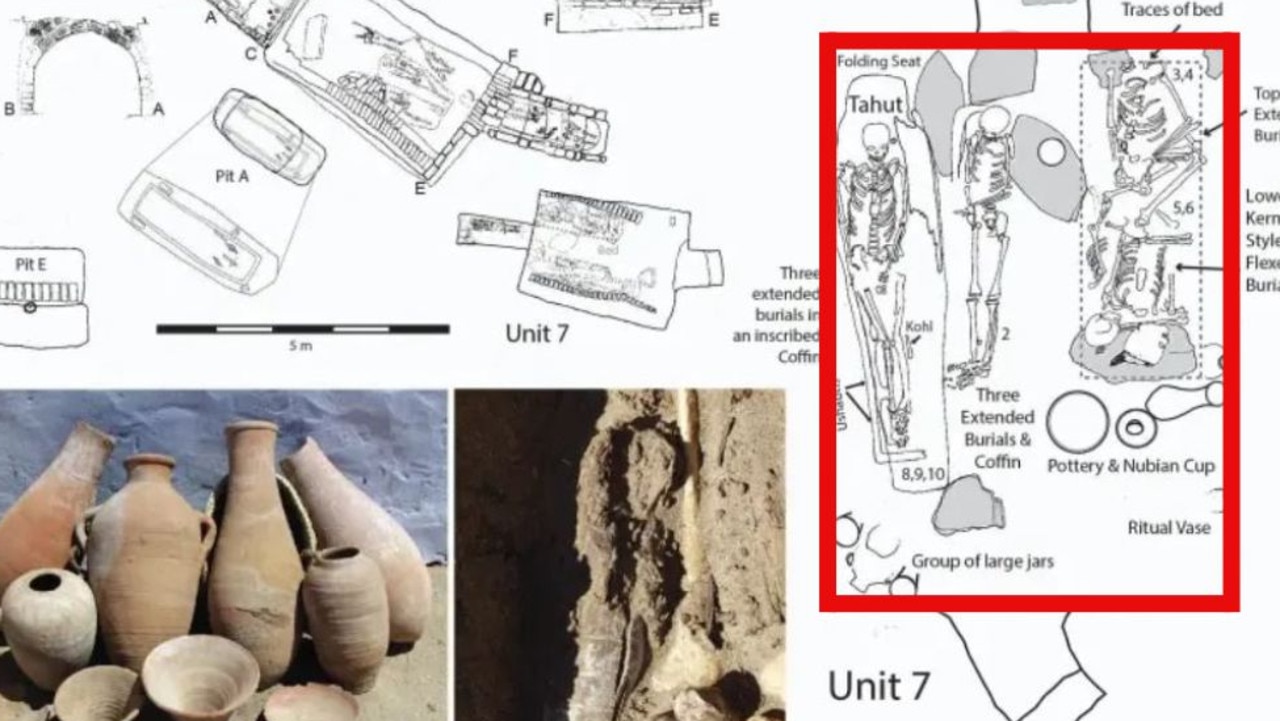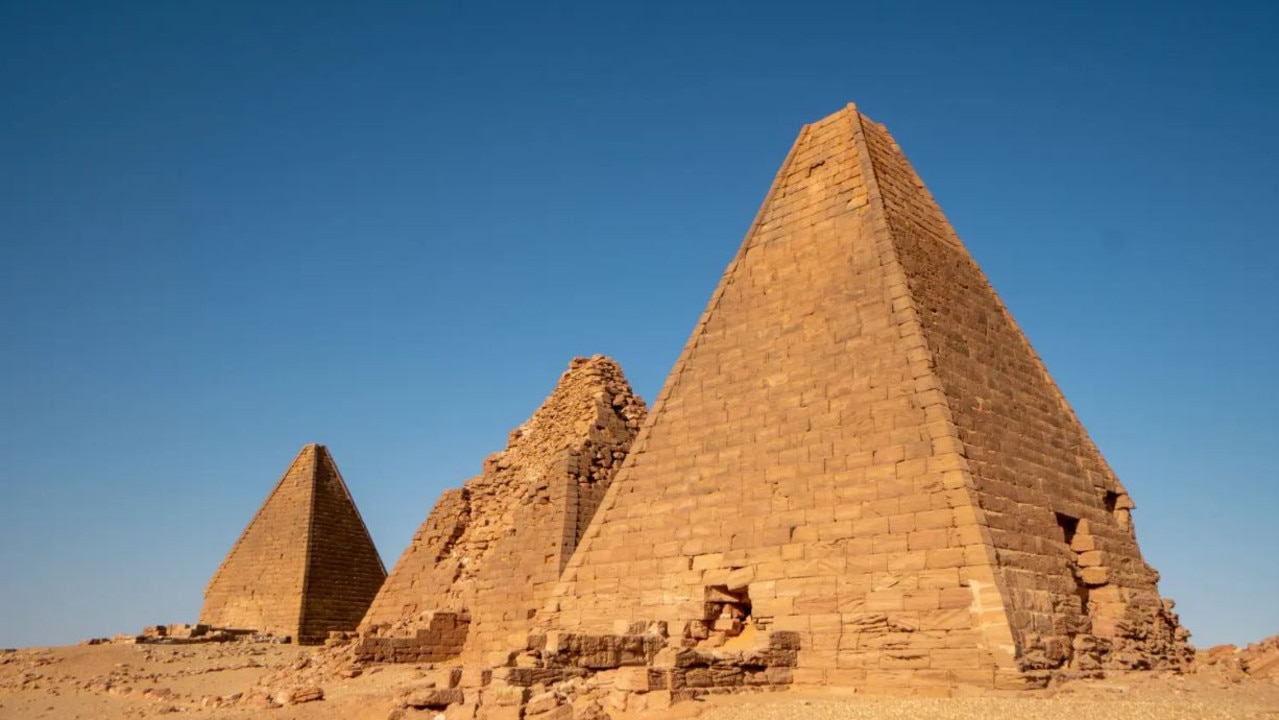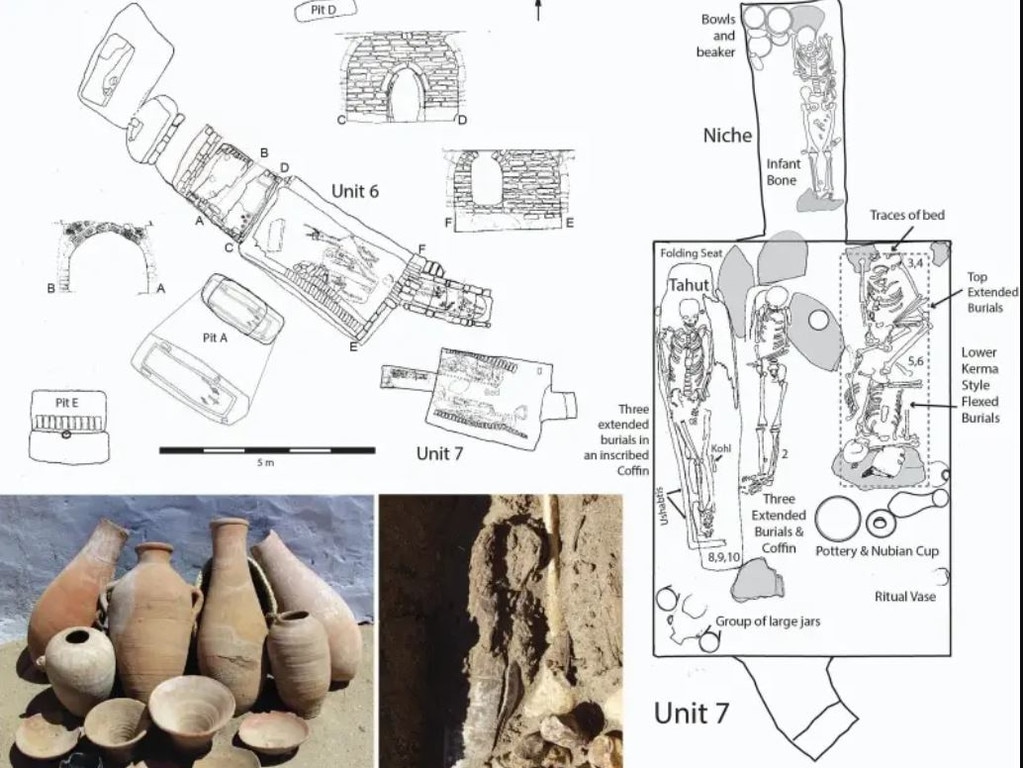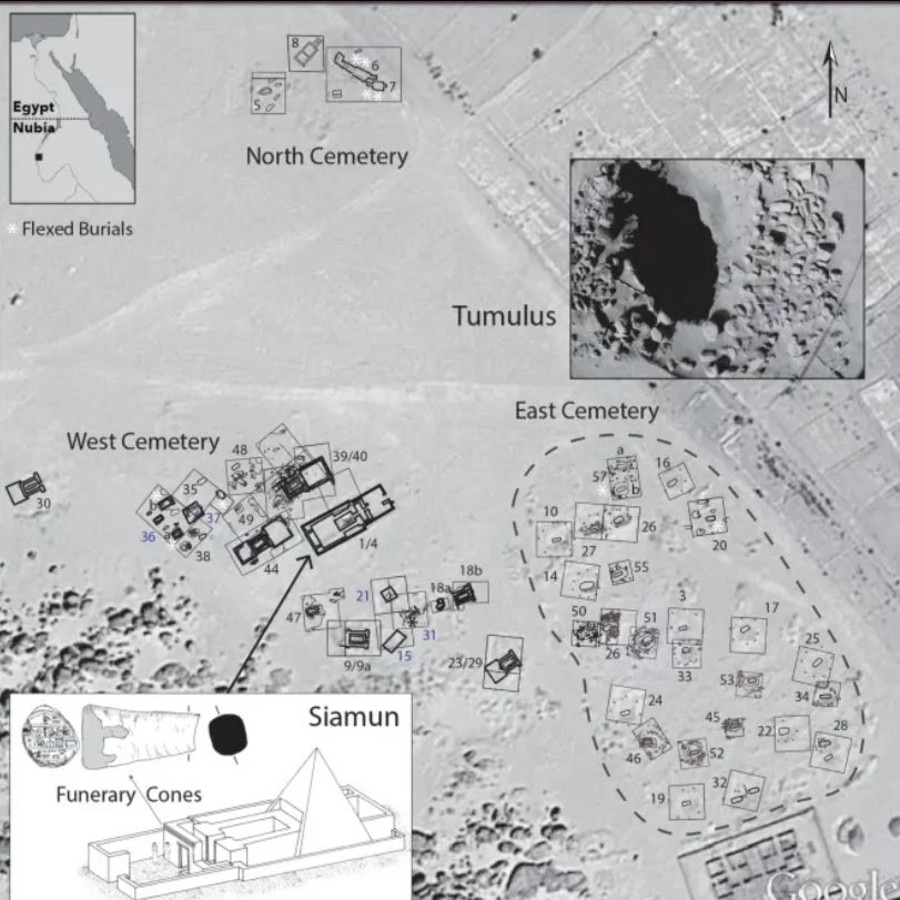Egyptian pyramids reveal hidden historical twist in skeleton surprise
Archaeologists have long suggested that Egyptian pyramid tombs were reserved for royalty and elite members of society but a new discovery may well turn that widely accepted theory on its head

READING LEVEL: GREEN
Archaeologists have long believed that Egyptian pyramid tombs were only used for the ruling class. However, a recent study of skeletons belonging to “extremely active” people might prove that they were wrong — and that poor physical labourers could have been buried there as well.
These findings, which were published in the Journal Of Anthropological* Archaeology*, could change how we view these ancient mausoleums*.
“I think we have assumed for far too long that pyramids were just for the rich,” said study author Dr Sara Schrader, an archaeology professor at the University Of Leiden, Netherlands, according to New Scientist.
Dr Schrader worked for over a decade at the Tombos excavation site in South Sudan, where archaeologists discovered at least five mud-brick pyramids containing pottery, along with the human remains of people who were not in the ruling class.

This region was under Egyptian control 3500 years ago when the ancient civilisation was at its peak, but by this time, their higher class no longer favoured pyramids as tombs — even though the Egyptian kings and queens still preferred them.
Dr Schrader and her team analysed the remains found at each pyramid, specifically focusing on subtle marks on the bones where muscles, tendons* and ligaments* were once attached, so they could determine the level of physical activity.
The team noted that some remains belonged to people who had done very little physical activity during their lifetimes, while others had been very active.
From this, the team deduced* that “pyramid tombs, once thought to be the final resting place of the most elite, may have also included low-status high-labour staff.”
They were operating under the theory that the low-activity individuals must have lived in luxury, while those with signs of wear and tear had a difficult life of labour, the Daily Mail reported.
“If these hardworking individuals are indeed of lower socio-economic* status, this counters* the traditional narrative* that the elite* were exclusively buried in monumental tombs,” concluded the research team.

They further suggested that the higher-ranking individuals had ordered the pyramids be built for “themselves, close family members, and servants/functionaries,” perhaps under the belief that their servants could continue to serve them in the afterlife.
Some experts have suggested different theories.
UK Egyptologist* Professor Aidan Dodson suggested that the high-activity individuals could have been nobles* who exercised to maintain their status.

However, Dr Schrader said this explanation seemed unlikely given the strong evidence from other sites showing that elites and non-elites had very different activity patterns.
She also threw cold water on a more sinister theory – that the servants could have been sacrificed in order to serve their masters in the afterlife – saying there was no evidence linking sacrifices to the relevant time period.
“(Human) sacrifice had occurred in the region about 500 years prior,” she said, before noting that “there’s really no evidence for it by the time Tombos was under ancient Egyptian control”.
Ultimately, the team concluded that digging deeper always brought the truth to light.
“With continued excavations, dating, and biomolecular analysis*, interpretations of lived experience in the past can be completely altered,” they wrote.
This article originally appeared in the New York Post and has been republished with permission.
POLL
GLOSSARY
- anthropological: the study of humankind
- archaeology: the study of human life from the past through examining material remains such as artefacts and architecture
- mausoleums: tombs
- tendons: tissue that connects muscle to bone
- ligaments: connective tissue that attaches bone to bone
- deduced: came up with a theory by ruling out other theories based on logic and reason
- socio-economic: social and economic conditions
- counters: goes against
- narrative: story
- elite: higher or ruling class
- Egyptologist: an expert in ancient Egypt
- biomolecular analysis: the study of biological molecules and how they interact with each other
EXTRA READING
Was Tut a ‘hand-me-down’ king?
Surprise Ancient Egypt cancer find
Egypt unveils hidden corridor in pyramid
QUICK QUIZ
1. Why are archaeologists now questioning the purpose of pyramids?
2. What are two different theories to explain why “high activity” people were buried in pyramids at Tombos?
3. How did Dr Schrader and her team study the activity level of the people buried at Tombos?
4. In which country were the pyramids and the human bones found?
5. How many years ago was the country under ancient Egyptian rule?
LISTEN TO THIS STORY
CLASSROOM ACTIVITIES
1. Place of burial
How does your place of burial determine your status back in ancient civilisations?
How do modern day Australian burial practices compare to this?
Are they determined by class or wealth? Can you choose where you are buried?
Where would you like your final resting place to be?
Time: allow 10 minutes to complete this activity
Curriculum Links: English, History, Personal and Social, Critical and Creative Thinking
2. Extension
Which theory do you think is the most likely of how workers were buried in ancient Egypt? Explain your answer.
Time: allow 5 minutes to complete this activity
Curriculum Links: English, History, Personal and Social, Critical and Creative Thinking
VCOP ACTIVITY
Read this!
A headline on an article – or a title on your text – should capture the attention of the audience, telling them to read this now. So choosing the perfect words for a headline or title is very important.
Create three new headlines for the events that took place in this article. Remember, what you write and how you write it will set the pace for the whole text, so make sure it matches.
Read out your headlines to a partner and discuss what the article will be about based on the headline you created. Discuss the tone and mood you set in just your few, short words. Does it do the article justice? Will it capture the audience’s attention the way you hoped? Would you want to read more?
Consider how a headline or title is similar to using short, sharp sentences throughout your text. They can be just as important as complex ones. Go through the last text you wrote and highlight any short, sharp sentences that capture the audience.

